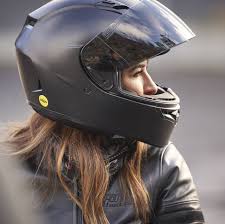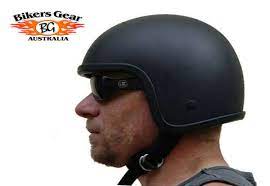Enhancing Bike Safety: The Importance of Riding Helmets

The Importance of Riding Helmets for Bike Safety
Riding a bike can be an exhilarating experience, whether you’re cycling through the countryside or commuting in the city. However, it’s essential to prioritise safety whenever you hop on your bike, and one crucial safety measure is wearing a riding helmet.
Wearing a helmet while cycling significantly reduces the risk of head injuries in the event of an accident. Head injuries can be severe and even life-threatening, so protecting your head with a well-fitted helmet is non-negotiable.
Modern riding helmets are designed to provide optimal protection without compromising comfort. They are lightweight, well-ventilated, and aerodynamic, making them comfortable to wear even on long rides. Many helmets also come with adjustable straps and sizing options to ensure a snug and secure fit.
When choosing a riding helmet for your bike adventures, look for certifications such as CE or CPSC to ensure that the helmet meets safety standards. Additionally, consider factors like ventilation, visibility (bright colours or reflective elements), and any additional features like built-in lights or MIPS technology for enhanced protection.
Remember that wearing a riding helmet is not just about personal safety; it sets a positive example for others and promotes a culture of bike safety in your community. By wearing your helmet every time you ride, you encourage others to do the same and contribute to creating a safer environment for all cyclists.
In conclusion, riding helmets are essential accessories for bike safety. They offer vital protection against head injuries and play a significant role in preventing serious consequences in case of accidents. Make wearing a helmet a non-negotiable part of your biking routine and enjoy your rides with peace of mind knowing that you’re prioritising safety every pedal of the way.
Essential Tips for Ensuring Safety with Your Cycling Helmet
- Always wear a properly fitted helmet when cycling.
- Make sure the helmet sits level on your head and covers your forehead.
- Fasten the chin strap securely to keep the helmet in place during a ride.
- Check for any cracks or damage to the helmet before each use.
- Replace your helmet if it has been involved in a crash or is showing signs of wear.
- Avoid attaching anything to the outside of the helmet that could affect its integrity.
- Store your helmet in a cool, dry place away from direct sunlight when not in use.
- Regularly clean your helmet with mild soap and water to remove dirt and sweat buildup.
- Consider replacing your helmet every 5 years, even if it hasn’t been damaged.
Always wear a properly fitted helmet when cycling.
It is crucial to always wear a properly fitted helmet when cycling. A helmet that fits correctly ensures maximum protection for your head in case of any unforeseen accidents while riding your bike. By wearing a properly fitted helmet, you significantly reduce the risk of head injuries and increase your overall safety on the road. Prioritising safety by wearing a helmet not only safeguards your well-being but also sets a positive example for others, promoting a culture of responsible cycling and encouraging bike safety within the community. Remember, a properly fitted helmet is an essential piece of equipment that should be worn every time you cycle to ensure a safe and enjoyable riding experience.
Make sure the helmet sits level on your head and covers your forehead.
When it comes to wearing a riding helmet for your bike adventures, a crucial tip to remember is to ensure that the helmet sits level on your head and covers your forehead. Proper helmet fit is essential for optimal protection in case of an accident. By positioning the helmet correctly, you can ensure that it provides maximum coverage to safeguard your head and minimise the risk of head injuries. Remember, safety should always come first when cycling, so take the time to adjust your helmet properly before hitting the road.
Fasten the chin strap securely to keep the helmet in place during a ride.
To ensure optimal safety while cycling, it is crucial to fasten the chin strap securely when wearing a riding helmet. By properly securing the chin strap, you can keep the helmet in place throughout your ride, reducing the risk of it coming loose or shifting during unexpected movements. A securely fastened chin strap not only enhances the overall effectiveness of the helmet in protecting your head but also ensures a comfortable and stable fit, allowing you to focus on enjoying your ride without any distractions or concerns about helmet displacement. Remember, a simple yet essential step like fastening the chin strap can make a significant difference in enhancing your biking experience and safety on the road.
Check for any cracks or damage to the helmet before each use.
It is crucial to inspect your riding helmet for any cracks or damage before each use. Regularly checking your helmet ensures that it remains structurally sound and capable of providing adequate protection in case of an accident. Even minor cracks or damages can compromise the integrity of the helmet, making it less effective in safeguarding your head. By taking a few moments to examine your helmet before every ride, you can ensure that you are prioritising your safety and well-being on the road.
Replace your helmet if it has been involved in a crash or is showing signs of wear.
It is crucial to replace your riding helmet if it has been involved in a crash or is showing signs of wear. Even if the damage is not visible, the structural integrity of the helmet may have been compromised, making it less effective in protecting your head in future accidents. Regularly inspect your helmet for any signs of wear, such as cracks, dents, or loose padding. Investing in a new helmet when needed ensures that you continue to have reliable protection while cycling and prioritise your safety on the road.
Avoid attaching anything to the outside of the helmet that could affect its integrity.
It is crucial to avoid attaching anything to the outside of your riding helmet that could compromise its integrity. Adding accessories or modifications to the exterior of the helmet, such as stickers, cameras, or other items, can weaken its structure and impact its ability to provide adequate protection in case of an accident. Keeping the helmet free from external attachments ensures that it maintains its intended design and functionality, safeguarding your head effectively while cycling. Prioritising the integrity of your riding helmet is essential for maximising safety on every ride.
Store your helmet in a cool, dry place away from direct sunlight when not in use.
To ensure the longevity and effectiveness of your riding helmet, it is important to store it in a cool, dry place away from direct sunlight when not in use. Exposing your helmet to direct sunlight and extreme temperatures can degrade its materials and impact its protective capabilities. By storing your helmet in a suitable environment, you can maintain its integrity and ensure that it continues to provide optimal safety whenever you hit the road on your bike.
Regularly clean your helmet with mild soap and water to remove dirt and sweat buildup.
Regularly cleaning your riding helmet with mild soap and water is a crucial tip to maintain its hygiene and effectiveness. Dirt and sweat buildup not only affect the appearance of the helmet but can also compromise its structural integrity over time. By cleaning your helmet regularly, you ensure that it remains fresh, comfortable to wear, and able to provide optimal protection in case of an accident. Incorporating this simple practice into your bike maintenance routine can help prolong the lifespan of your helmet and contribute to a safer and more enjoyable cycling experience.
Consider replacing your helmet every 5 years, even if it hasn’t been damaged.
It is recommended to consider replacing your riding helmet every 5 years, even if it has not sustained any visible damage. Over time, the materials in a helmet can degrade due to factors like exposure to sunlight, sweat, and general wear and tear. Even if a helmet looks intact from the outside, its protective capabilities may diminish over the years. By replacing your helmet every 5 years, you ensure that you are consistently benefiting from the latest safety technologies and materials, thus maintaining optimal protection for your head while cycling.

